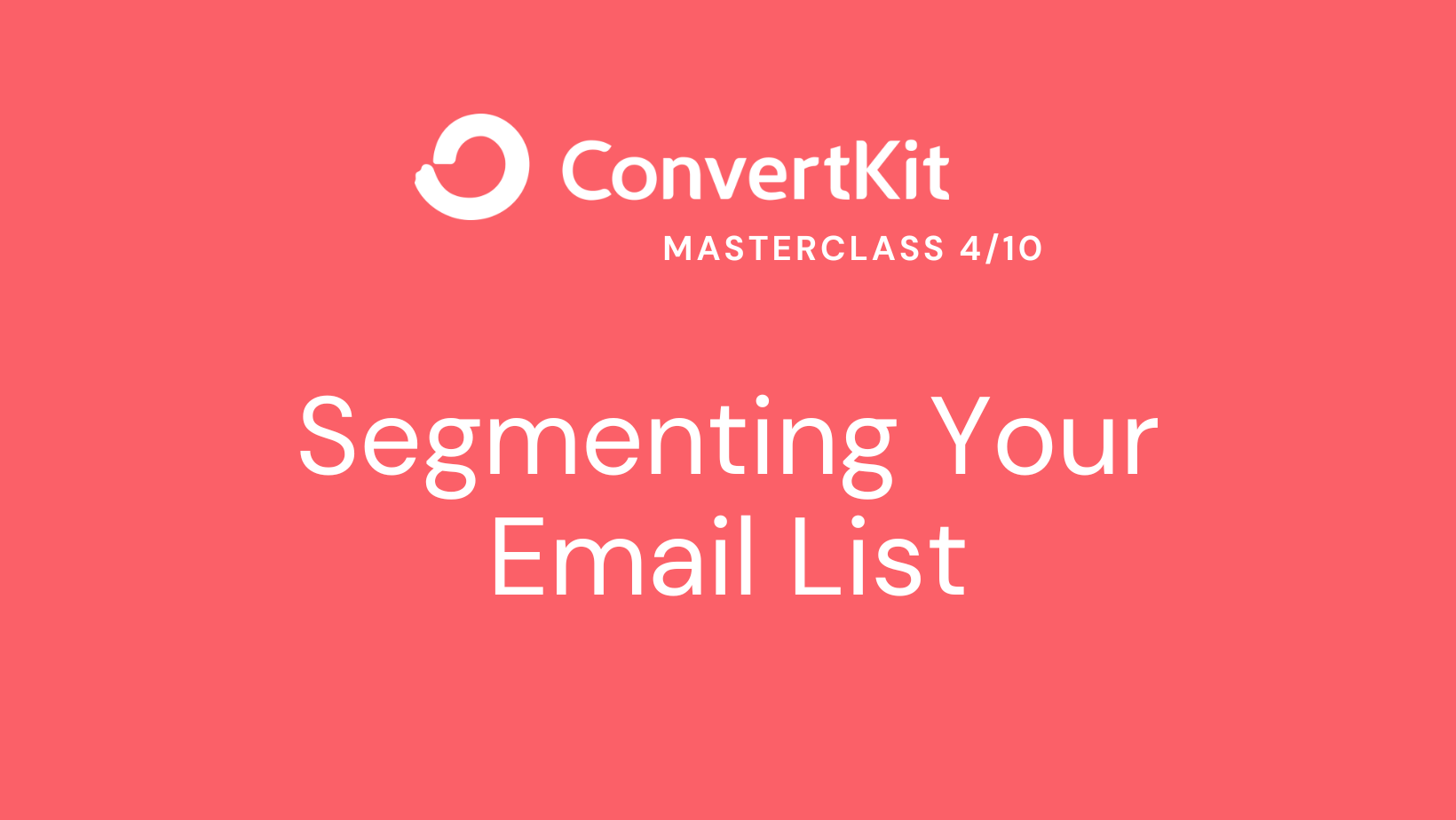Use Tags and Custom Fields
Once you have defined your segmentation criteria, ConvertKit offers powerful tools to implement your segmentation strategy effectively. Tags and custom fields are two essential features that allow you to categorize and collect specific information about your subscribers. In this section, we’ll explore how to use tags and custom fields in ConvertKit to segment your email list and deliver highly targeted content.
Try ConvertKit
ConvertKit is the only email marketing platform we use, and will ever use.
ConvertKit is our #1 recommended email marketing platform because it has been built with care to the exact needs of creators building online businesses. Their user experience is very user-friendly. And segmenting our subscribers into focused groups so that we can deliver content specific to their needs has never been easier. We’re all-in on ConvertKit.
Tags in ConvertKit
Tags are labels that you can apply to subscribers based on their attributes, actions, or interests. They help you categorize and organize your subscribers into different segments. Here’s how you can use tags effectively in ConvertKit:
- Creating Tags: In ConvertKit, you can create tags that align with your segmentation criteria. For example, if you run a fashion blog, you might create tags such as “Men’s Fashion,” “Women’s Fashion,” or “Accessories.” Tags can be created and managed within ConvertKit’s interface.
- Applying Tags: You can apply tags manually to individual subscribers or automate the tagging process using rules and triggers. For example, you can set up a rule that applies the “Men’s Fashion” tag when a subscriber clicks on a specific link related to men’s fashion in your email.
- Tag-based Automations: Tags can also be used as triggers within ConvertKit’s automation feature. You can create automations that initiate specific actions based on the presence or absence of tags. For instance, you can send a follow-up email with a discount code to subscribers who have the “Accessories” tag.
Custom Fields in ConvertKit
Custom fields allow you to collect and store additional information about your subscribers beyond their basic contact details. Here’s how you can leverage custom fields in ConvertKit:
- Creating Custom Fields: In ConvertKit, you can create custom fields to gather specific data points about your subscribers. This can include their preferences, interests, or any other information relevant to your business. Custom fields can be created and managed within ConvertKit’s interface.
- Gathering Subscriber Data: You can collect data for custom fields through various touchpoints such as signup forms, landing pages, or surveys. For example, you can include a dropdown field on your signup form asking subscribers to select their preferred communication channel (email, SMS, or both).
- Personalizing Emails with Custom Fields: Custom fields allow you to personalize your emails by dynamically inserting subscriber-specific information. For instance, you can address each subscriber by their first name or include personalized recommendations based on their specific interests.
Combined Use of Tags and Custom Fields
To create highly targeted segments, you can combine the use of tags and custom fields. Here’s an example of how they can work together:
Let’s say you have a food blog, and you want to segment your subscribers based on their dietary preferences. You can create tags such as “Vegan,” “Gluten-Free,” or “Paleo” and a custom field called “Dietary Preference.” When a subscriber signs up, they can select their dietary preference from a dropdown list, and ConvertKit will assign the corresponding tag based on their selection.
Using tags and custom fields in combination allows for more precise targeting and personalization in your email campaigns.
Tags and custom fields are powerful tools in ConvertKit that enable you to segment your email list and deliver highly targeted content to your subscribers. By creating tags, applying them manually or through automations, leveraging custom fields to gather specific subscriber information, and combining their use, you can create personalized and relevant email campaigns that resonate with each segment.
In the next section, we will explore how to automate your segmentation process in ConvertKit. Stay tuned for our upcoming blog post on “Automate Your Segmentation” in ConvertKit.

Leave a Reply Cancel reply